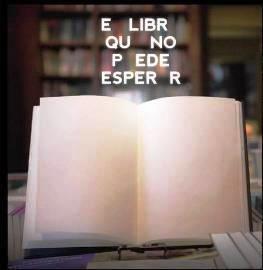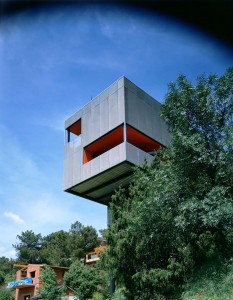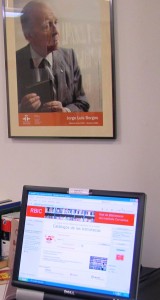Recent Books on Architecture in the Instituto Cervantes Library
In conjunction with the exhibit: YAS: Young Architects from Spain, the library has selected a number of recent publications for anyone interested in doing further research on the topic. The majority deal with Spanish architecture, but there are books about a number of other countries. Many are bilingual editions.
(Siga leyendo esta entrada…)
Isaac Albéniz. Homenaje / Tribute. Peter Schaaf en concierto / in concert
Instituto Cervantes de Nueva York. Auditorio, 24 de julio, 7:00 pm
 Book I: Evocación, El Puerto, El Corpus en Sevilla
Book I: Evocación, El Puerto, El Corpus en Sevilla - Book II: Rondeña, Almería, Triana
- Book III: El Albaicín, El Polo, Lavapiés
- Book IV: Málaga, Jerez, Eritaña
El pianista Peter Schaaf ha recibido críticas notablemente favorables por la grabación de su CD Iberia (2011), la monumental, virtuosa y conmovedora obra maestra de Isaac Albéniz. «… escuchar la manera hermosa y profunda en que toca Schaaf… su compromiso e intensidad son totales y alentadores» (Jeff Simon, Buffalo News).
Schaaf *, neoyorquino de nacimiento, se enamoró de la música flamenca cuando era un adolescente y escuchaba los discos de Sabicas y Carlos Montoya. Aprendió Triana, de Iberia, cuando era un estudiante de la Juilliard School, con el apoyo docente de Rosina Lhévinne. Después continuó su carrera como músico de cámara y acompañante de artistas tales como Yo-Yo Ma, Jon Vickers y Renata Tebaldi. Más tarde, tras un paréntesis de veinticinco años en los que se dedicó a ser fotógrafo de músicos, retomó el piano y aprendió toda Iberia de Albéniz, su trabajo, sin duda, más amado.
Precio entrada: $15 / $10 socios del Instituto Cervantes / Modalidad de pago:
- Adquirir el ticket en Matrícula on-line en la página Web. Luego entrar en Courses y eligir Cultural Events en la pestaña superior izquierda. Deberá aparecer el evento «Peter Schaaf in concert» que permite ya efectuar el pago. Se debe crear una cuenta en caso de que no lo haya hecho previamente
- Adquirir la entrada por teléfono o presentándose físicamente en las oficinas de administración del Instituto y hacer la compra con tarjeta
- Más información: Departamento de Cultura: 212 308 7720 ext.119
Visibilidad de los Derechos Humanos en el Perú / Photojournalism: Oscar Medrano Pérez
Exposición / Exhibition
Auditorio ICNY- 20 al 31 de julio – Inauguración: 20 de julio, 6:00 pm
 Oscar Medrano Pérez nos aproxima, a través de 40 fotografías, a la cruda realidad por la fuerza de las imágenes captadas en relación a los acontecimientos históricos ocurridos en Perú, que confrontó la violencia interna y hoy ha vuelto a fortalecer la justicia, la integración efectiva de la paz y el respeto por los derechos humanos. El autor nos muestra las imágenes inolvidables de su trabajo durante cinco décadas, documentando la realidad y etapas de violencia ya superadas. Se podrá observar la destrucción y muerte en el período que afectó a la población peruana al cambiar su historia. Esta etapa, entre 1980 y 1990, se produjo con el surgimiento de Sendero Luminoso grupo terrorista al que el gobierno peruano logró reducir junto con otros. En la muestra se ven imágenes de esposas, madres e hijas que sufrieron la pérdida de sus seres queridos, así como de niños huérfanos, miembros de los comités de autodefensa (ronderos).
Oscar Medrano Pérez nos aproxima, a través de 40 fotografías, a la cruda realidad por la fuerza de las imágenes captadas en relación a los acontecimientos históricos ocurridos en Perú, que confrontó la violencia interna y hoy ha vuelto a fortalecer la justicia, la integración efectiva de la paz y el respeto por los derechos humanos. El autor nos muestra las imágenes inolvidables de su trabajo durante cinco décadas, documentando la realidad y etapas de violencia ya superadas. Se podrá observar la destrucción y muerte en el período que afectó a la población peruana al cambiar su historia. Esta etapa, entre 1980 y 1990, se produjo con el surgimiento de Sendero Luminoso grupo terrorista al que el gobierno peruano logró reducir junto con otros. En la muestra se ven imágenes de esposas, madres e hijas que sufrieron la pérdida de sus seres queridos, así como de niños huérfanos, miembros de los comités de autodefensa (ronderos).
El autor llegó a lugares casi inaccesibles del Perú tras los ataques, como Lucanamarca y Huaychao. Además, Medrano recoge imágenes no comunes en la sociedad: Peruanos que habitan en las altas cumbres andinas y las poblaciones selváticas, rostros inocentes de niños y niñas y ancianos descendientes de culturas ancestrales.
Organizan: Peruvian American Photojournalism Exhibition Committee 2012 e Instituto Cervantes NY. Comisario: Roberto Bustamante
Oscar Pérez Medrano leads us to the cruel reality on the strength of the images taken in relation to events which occurred in Peru’s history. During the 80s and 90s Peru confronted its internal violence and it recently has shifted to further justice, establishing an effective means for the integration of peace and respect for human rights.
The author shows us unforgettable images of his photographic work throughout five decades documenting the reality and stages of violence and overcome. The public will see a selection of impressive photos of destruction and death in the period of internal violence that affected the Peruvian people during this historical change, especially the Andean communities. This phase of violence during the 1980 and 1990 occurred with the emergence of Sendero Luminoso. The intervention of the Peruvian government successfully managed to reduce this and other terrorist groups with the capture of its top leaders.
In this exhibit the author shows some pictures of wives, mothers and daughters who suffered the loss of their loved ones, as well as orphaned children, members of self-defense committees (ronderos) that emerged during the years of political violence. The author went to places almost inaccessible inPeruafter the terrorist attacks such as the towns of Lucanamarca and Huaychau. The image of the wounded face of Edmundo Camana Sumari, one of the seven survivors of the slaughter of Lucanamarca became famous for his photo with a bandaged head covering his eye.
Furthermore, the author picks the other side of the coin of Peruvian reality with uncommon images of its society, portraying villagers of the high Andean peaks and forest populations, innocent faces of children, the elderly descendants of ancient cultures that are far from technological advances and lifestyles, a sector of the new generation of children, adolescents and women of the jungle region. There are portraits of enraged people, images of social conflicts, Andean traditional celebrations and cultural events.
‘El libro que no puede esperar’ / ‘The Book that can’t wait’
Eterna Cadencia, editorial independiente argentina, y la Agencia DraftFCB en Buenos Aires han presentado un especial proyecto llamado “El libro que no puede esperar”
 Se trata de una edición particular del libro ‘El futuro no es nuestro. Nueva narrativa latinoamericana’ de Diego Trelles Paz (comp.): una selección de nueva narrativa latinoamericana en una edición que desaparecerá en dos meses. Una vez abierto el envoltorio, el texto de la obra empieza a desaparecer y permite solo 60 días para leerlo hasta que se queda completamente en blanco. Este original proyecto tiene como objetivo que el lector no aplace la lectura del libro una vez lo ha comenzado. El aspecto negativo es que una vez borradas las letras es imposible re-leerlo
Se trata de una edición particular del libro ‘El futuro no es nuestro. Nueva narrativa latinoamericana’ de Diego Trelles Paz (comp.): una selección de nueva narrativa latinoamericana en una edición que desaparecerá en dos meses. Una vez abierto el envoltorio, el texto de la obra empieza a desaparecer y permite solo 60 días para leerlo hasta que se queda completamente en blanco. Este original proyecto tiene como objetivo que el lector no aplace la lectura del libro una vez lo ha comenzado. El aspecto negativo es que una vez borradas las letras es imposible re-leerlo
The argentinian independent publisher and bookstore Eterna Cadencia and the Agency Draftfcb in Buenos Aires present a new collection of Latin American fiction which is printed with disappearing ink. Once the book is exposed to light and air – it’s sold in shrink-wrapped plastic pouches which have to be torn open- the ink will begin to fade. So it is only actually readable for about two months. After that, all you have are blank pages
Mejoras en el Servicio del OPAC de las Bibliotecas del Instituto Cervantes / Improving the Instituto Cervantes Online Catalog
Ya está actualizada la nueva versión 2.0 de Absysnet, aunque quedan todavía algunos aspectos pendientes. Así puede ser que haya algún problema en el acceso a los recursos electrónicos, la búsqueda y reservas en el OPAC o cierta lentitud en la conexión, que estamos viendo de solventar en estos momentos.
¡ Rogamos disculpen las molestias !
Because our library system is being upgraded, users may experience some service interruptions to OPAC, online-reservations and other electronic resources.
We apologize for the inconvenience !

